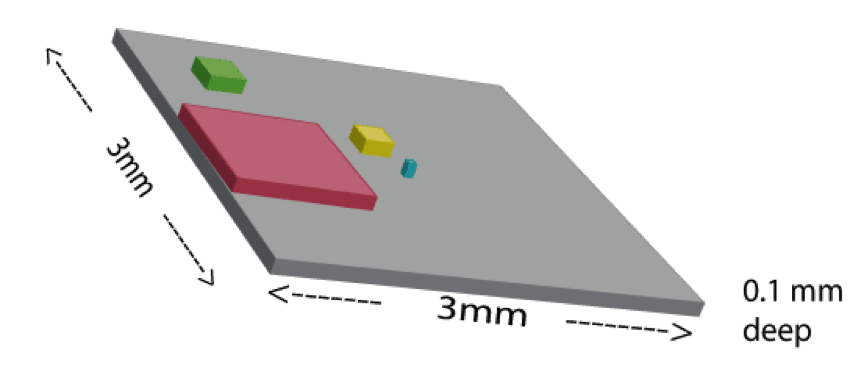Slicing and Dicing
 A simple counting tray has a fixed-size grid inscribed in it. That's great if you're always counting things that are the same size. In fact, grad students studying stream insects make their own counting trays using plexiglass, glue, and sharpie markers.
A simple counting tray has a fixed-size grid inscribed in it. That's great if you're always counting things that are the same size. In fact, grad students studying stream insects make their own counting trays using plexiglass, glue, and sharpie markers.
But when you're counting bacterial cells at a high magnification, you can't just draw on a slide. Instead you have to buy something from someone who knows how to etch glass in a precise way - and if you're going to buy a piece of equipment, you want that piece of equipment to be as useful as possible. You want to be able to use it for big cells, for small cells, or for something in between.
That's why the hemocytometer's "counting tray" is so funny-looking. Take a close look and answer the following questions:
 The horizontal and vertical lines on the outer thirds divide each mm into how many subslices?
The horizontal and vertical lines on the outer thirds divide each mm into how many subslices?
The dark horizontal and vertical lines in the middle divide each mm into how many subslices?
The light horizontal and vertical lines in the middle divide each horizontal SUBslice into how many minislices?
So, the moral of the story is... all these different size subslices give you different volumes to count. Small volumes for small cells, and large volumes for large cells. The figure below might help you visualize these different volumes.

photo credits: sharpie |
Copyright University of Maryland, 2013
You may link to this site for educational purposes.
Please do not copy without permission
requests/questions/feedback email: mathbench@umd.edu